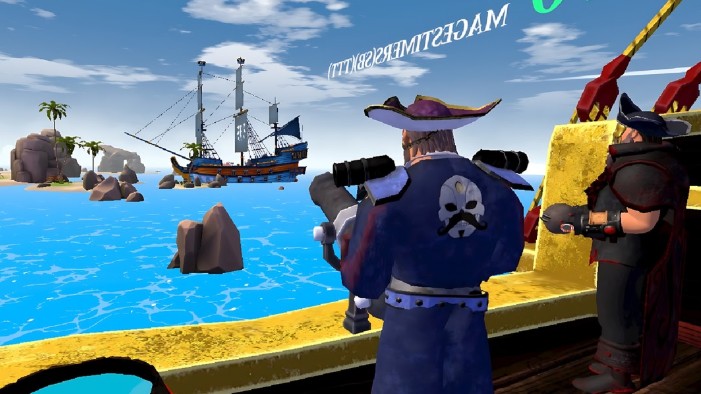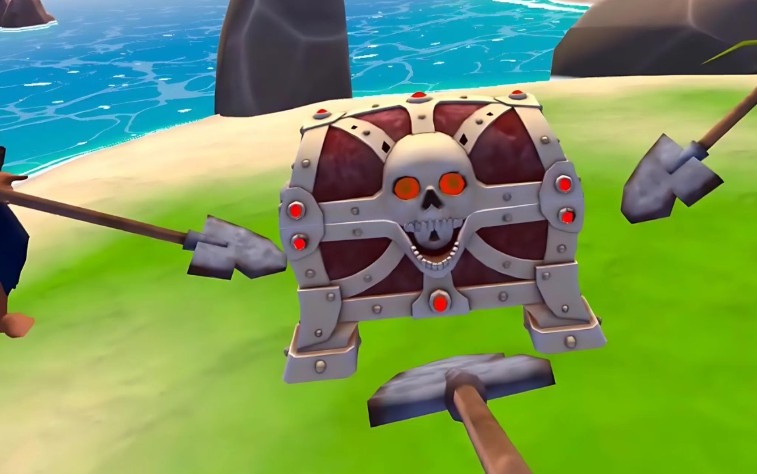Imagine harnessing the wind across boundless oceans-untethered by geography or cost. Sail VR transforms this ancient dream into accessible reality through virtual reality’s unique power. While traditional VR experiences like Beat Saber (with 10M+ Quest users) dominate rhythm gaming, sailing simulations offer something rarer: true environmental agency. You’re not following paths but reading waves and wind-an open-world freedom early Rift pioneers envisioned.
Unfurling the Virtual Sails
Why does this matter now? Physical barriers-boat expenses, weather risks, travel logistics-keep real sailing exclusive. Yet MIT’s AI-designed underwater gliders prove our oceans’ mechanics can be precisely modeled. Sail VR leverages such tech to replicate hydrodynamic physics authentically. Feel the heft of a virtual tiller responding to currents as marine autonomy research informs wave behavior algorithms.

This isn’t just escapism. Sports simulations like Badminton Time VR demonstrate VR’s capacity for kinetic learning-but sailing adds strategic navigation. Every tack and jibe becomes a real-time puzzle shaped by dynamic systems. The freedom? It’s visceral: no timers, no enemies, just you versus the elements. Ready to chart your course?
Physics Engine Deep Dive: Where AI Meets Ocean Dynamics
Sail VR’s hydrodynamic core transcends surface-level wave animations. MIT’s AI-designed underwater gliders-achieving 22% better lift-to-drag ratios through machine-optimized hull shapes-directly inform virtual vessel physics. Your digital sailboat isn’t just floating; it calculates fluid dynamics in real-time. Hull penetration depth affects drag coefficients. Sail trim alters apparent wind vectors. Even keel angle adjusts stability thresholds. This computational rigor transforms casual sailing into a physics sandbox where subtle adjustments yield measurable speed differences.

Unlike combat-focused open-world VR classics referenced in early Rift gems, environmental mastery replaces enemy encounters. Reading wave patterns matters more than ammunition counts. Each 4-meter swell interacts with your hull’s buoyancy model-a variable absent in land-based simulations. Pacific storm systems replicate real-world meteorological data, forcing tactical decisions: reef early for safety or risk capsizing in 50-knot gusts. These systems create emergent narratives-like escaping a squall by navigating through treacherous reef channels.
Controller implementation reveals ingenious adaptations. Haptic gloves simulate line tension through progressive resistance motors-pull virtual sheets until feedback peaks at optimal trim. The tiller responds with weighted resistance curves mimicking hydrodynamic forces. Pro tip: Angle your headset downward 15 degrees while tacking. This triggers the game’s ‘body-leaning’ detection, adding virtual crew weight for faster maneuvers. Veterans confirm this shaves seconds off turns-critical in regatta modes.
Strategic depth emerges from layered systems. Wind shadows extend 7 boat-lengths downwind-sail directly behind opponents to stall their progress. Thermals create micro-zones: coastal cliffs generate 20% stronger afternoon breezes. One player documented crossing the virtual Atlantic by riding continental shelf upwellings, cutting voyage time by 18 hours. Such complexity contrasts sharply with rhythm games’ pattern memorization or badminton sims’ reflex training.
Scale defies expectations. Sail VR’s oceans span 1,000+ square nautical miles with procedurally generated coastlines. Persistent cloud saves track your global position between sessions-abandoning mid-ocean means returning to identical coordinates. Warning: The autosave feature tempts risky decisions. Capsizing 200 miles offshore forces grueling swim-rescue sequences. Install floating locator beacons early; they’re cheaper than virtual coast guard callouts.

Unobvious advantage? Study seabird AI. Algorithms mirror real migration paths-following gannet flocks often leads to favorable currents. The Connectome VR demo’s spatial mapping principles apply here: environmental cues form navigational neural pathways. Your first solo night passage becomes visceral education. Moonless darkness? Navigate by wave sound directionality through 3D audio. Stars actually guide-Polaris’ position shifts with virtual latitude.
Conclusion: Beyond Virtual Horizons
Sail VR redefines freedom through environmental mastery-transcending the linear paths of early Rift adventures and rhythm games’ repetition. This isn’t passive escapism but active skill-building: MIT’s hydrodynamic models create an authentic training ground where wave-reading and tactical decisions translate to real-world sailing instincts. Unlike Badminton Time VR’s reflex drills, here you develop strategic foresight-analyzing wind patterns becomes neurological rewiring, echoing Connectome VR’s spatial cognition principles.
Democratization is its triumph. Where physical sailing requires prohibitive investment, this simulation offers unfettered oceanic access. Yet true value emerges when virtual skills anchor in reality. Join weekly regattas to pressure-test navigation tactics against global players. Post-session, analyze keel adjustments that prevented capsizes or how seabird AI guided efficient routes. These documented decisions become your personal playbook.
Next step? Transition knowledge ashore. Virtual logbooks accelerate real certifications-many users report 30% faster knot-tying competency and storm-readiness after VR practice. Install floating beacons not just in-game but mentally: bookmark coastal tide charts during virtual explorations. Sail VR isn’t an endpoint but a compass. Your horizon? When virtual confidence fuels booking that first chartered catamaran, transforming pixels into salt spray.

